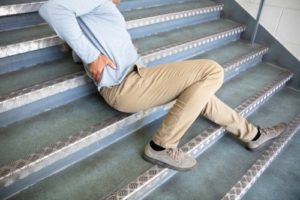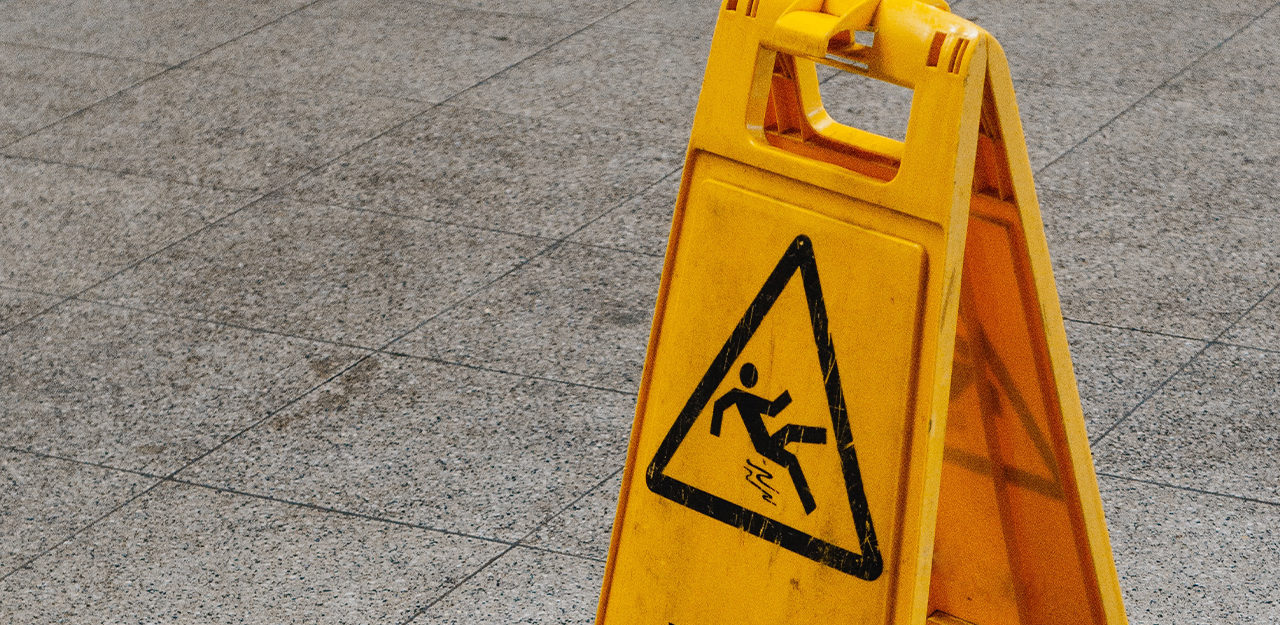
Slips, trips, and falls can never be fully prevented, though necessary measures should be taken to eliminate STF hazards as much as possible. Slips, trips, and falls are the leading cause of accidents/injuries at businesses and workplaces. In fact – slips, trips, and falls are the most frequent causes of workers’ compensation claims. According to the Bureau of Labor Statistics (BLS), slips, trips, and falls accounted for 17 percent of all the fatal occupational injuries in 2017. The BLS reported a preliminary total of 5,147 fatal work injuries for calendar year 2017. Of this total, 887 were associated with slips, trips and falls. Falls to a lower level accounted for 80 percent of the fatal falls. In 2017, STFs were the second leading fatal occupational injury cause, first being transportation incidents.
Causes of Slips, Trips, and Falls
Hazards leading to slips, trips, and falls are often overlooked as these are not always noticeable hazards. Especially in busy work environments where there is considerable foot traffic, the probability of injury from a slip, trip and/or fall is a big concern. There are three main components that are essential in reducing STFs: the design of the walking surface-material, walking surface upkeep, and hazard recognition training. Making sure to look out for these hazards and eliminating them, is extremely important as they can call for some serious loss. If you discover a slip, trip, and/or fall hazard and cannot resolve it yourself, you should immediately report it to someone who can. There are various factors that contribute to the risk of STFs.
Housekeeping
Developing and implementing a housekeeping program/STF risk control prevention policy could help to prevent slips, trips, and falls, as well as help reduce the number of workplace injuries and associated loss costs.
Floors, Aisles, and Passageways
Floors, aisles, and passageways are particularly common places for a slip, trip, or fall to occur. This is because these are high traffic areas. As mentioned above, proper slipresistant flooring should be chosen as well as proper cleaning methods. Slippery surfaces can transpire from polymer on wax dressing; inadequate drying time; buffing to a mirrorlike shine; inadequate removal of grease or oil; or letting cleaning residue combine with freshly applied finishes.
Stairways and Ramps
Proper maintenance of stairs, ramps, handrails and guardrails is important because stairways and ramps present many hazards – some that could result in a severe injury. Many accidents involving falls within and around buildings occur on stairways and ramps.
Additional Resources:
